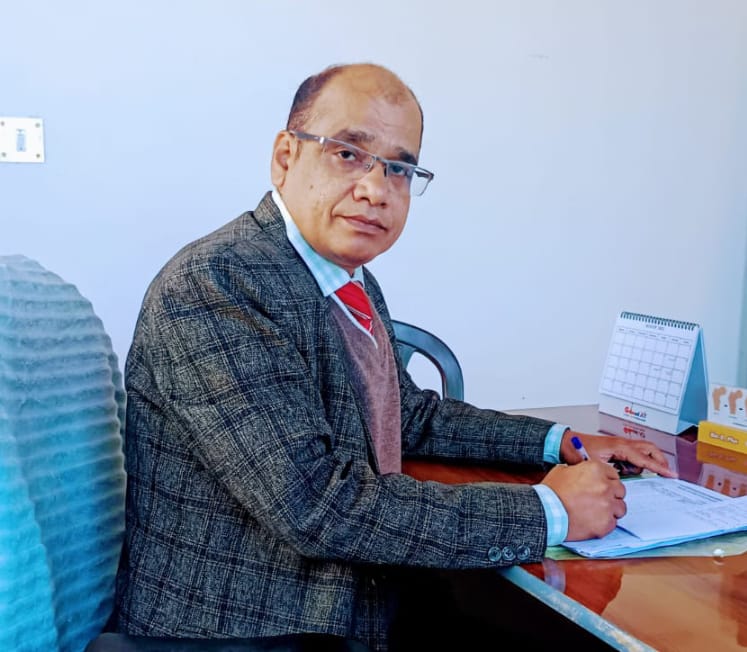

Prof. Dr. Satish Kumar Panda, MD (Ay), PhD
Principal- Kritika Ayurvedic Medical College & Hospital, Bareilly, Uttar Pradesh.
प्रस्तावना (Introduction)
कायचिकित्सा (Internal Medicine) is one of the Ashtanga Ayurveda (8 branches) and deals with the diagnosis and treatment of systemic diseases affecting the whole body (Kaya). The term “Kaya” refers not just to the physical body but also to Agni (digestive fire) and metabolic processes, while “Chikitsa” means therapy aimed at restoring Dosha-Dhatu-Mala equilibrium.
1. काय (Kaya) – The Body in Ayurveda
1.1 परिभाषा (Definition)
- Kaya = शरीर (Body) formed from Shukra (sperm) + Shonita (ovum).
- Functional Aspect:
- “बीजतेनादिभिः इति कायः” → Body is nourished by ingested food (Ahara).
- “कायोऽग्निः” → Kaya represents Jatharagni (digestive fire) and metabolism.
1.2 कायस्य पर्यायाः (Synonyms of Kaya)
- देह – Physical structure.
- शरीर – Made of Panchamahabhuta.
- कलेवर – Formed from Shukra & Shonita.
- तनु – That which grows with nourishment.
- मूर्ति – Has a definite shape.
2. कायभेदाः (Types of Kaya – Classifications)
2.1 मानसिक प्रकृतिः (Based on Mental Constitution – 16 Types)
| प्रकृतिः | लक्षणानि (Characteristics) |
|---|---|
| सात्त्विक (Divine) | |
| 1. ब्राह्म | Wise, free from anger, discriminative. |
| 2. माहेन्द्र | Knowledgeable, courageous, devoted to scriptures. |
| 3. गान्धर्व | Loves music, arts, luxury. |
| राजसिक (Ambitious) | |
| 4. आसुर | Cruel, envious, arrogant. |
| 5. राक्षस | Violent, excessive eating/sleeping. |
| तामसिक (Ignorant) | |
| 6. पैशाच | Unclean habits, abnormal diet. |
| 7. पाशव | Animal-like behavior, lacks intellect. |
2.2 दोषप्रकृतिः (Based on Dosha Dominance – 7 Types)
| प्रकृतिः | लक्षणानि |
|---|---|
| वातज | Lean, dry skin, restless, cracking joints. |
| पित्तज | Fair, irritable, intelligent, excessive sweating. |
| कफज | Strong, calm, oily skin, deep voice. |
| द्वन्द्वज (Mixed) | E.g., Vata-Pitta (lean but irritable). |
| सम प्रकृतिः (Balanced) | Ideal health, all Doshas in equilibrium. |
2.3 धातुसारभेदाः (Based on Tissue Excellence – 8 Types)
| धातुसारः | लक्षणानि |
|---|---|
| रससार | Soft, smooth skin, happy nature. |
| रक्तसार | Copper-colored palms, enthusiastic. |
| मांससार | Muscular, strong, courageous. |
| मेदसार | Obese, wealthy, less endurance. |
| अस्थिसार | Strong bones, high endurance. |
| शुक्रसार | Highly fertile, attractive, strong vitality. |
3. चिकित्सा (Chikitsa – Treatment Principles)
3.1 परिभाषा (Definition)
- “रोगापनयनम्” → Removal of disease.
- “प्रकृतिस्थापनम्” → Restoring natural balance.
3.2 चिकित्साभेदाः (Types of Treatment)
(A) Based on Approach
- शोधन (Purification) – Panchakarma (Vamana, Virechana, etc.).
- शमन (Palliative) – Herbal medicines to pacify Doshas.
- पथ्य (Diet & Lifestyle) – Ahara-Vihara for healing.
- निदान परिवर्जन (Avoiding Causes) – Removing disease triggers.
(B) Based on Number of Therapies
| संख्या | चिकित्सा | उदाहरण |
|---|---|---|
| पंचकर्म | 1. वमन (Emesis) 2. विरेचन (Purgation) 3. बस्ति (Enema) 4. नस्य (Nasal therapy) 5. रक्तमोक्षण (Bloodletting) | For deep detox. |
| षड्विध चिकित्सा | 1. लङ्घन (Fasting) 2. बृंहण (Nourishment) 3. स्वेदन (Sweating) 4. स्तम्भन (Astringent) 5. शमन (Pacifying) 6. शोधन (Purification) | For Dosha balance. |
4. कायचिकित्सायाः महत्त्वम् (Importance of Kayachikitsa)
- Treats systemic diseases like Jwara (fever), Prameha (diabetes), Kushtha (skin diseases).
- Focuses on Agni correction (digestion) and Dosha equilibrium.
- Uses herbs, diet, Panchakarma, and Rasayana (rejuvenation).
4.1 उपसंहार (Conclusion)
Kayachikitsa is holistic medicine that treats the body (Kaya) as a whole, not just symptoms. A physician must understand Dosha, Dhatu, Mala, and Agni to provide effective treatment.
॥ समाप्तम् ॥
